Carrizo
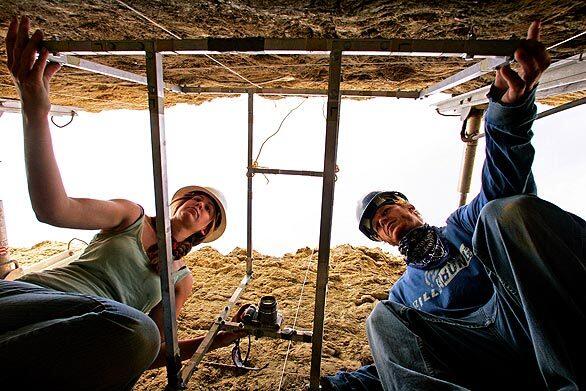
Graduate students Sarah Robinson of Arizona State University and Paul McBurnett of Cal State Northridge study the walls of a trench at the Bidart Fan in the Carrizo Plain. (Ricardo DeAratanha / Los Angeles Times)
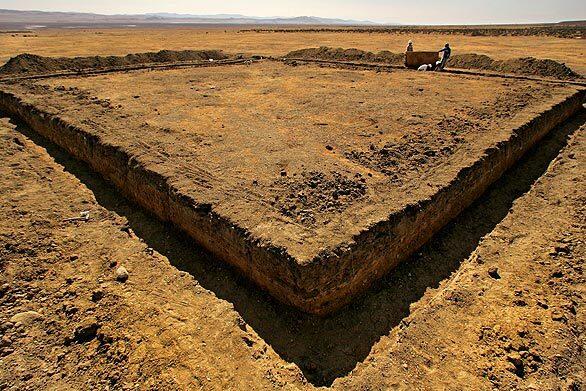
Geologists are trying to construct a history of earthquakes on the San Andreas Fault by reading lines of sediment in a trench at the Bidart Fan in the Carrizo Plain. (Ricardo DeAratanha / Los Angeles Times)
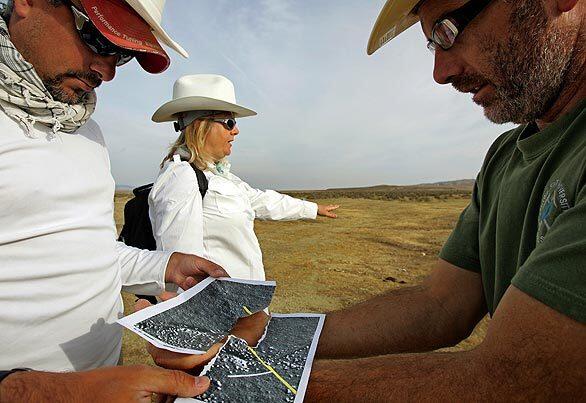
UC Irvine postdoctoral scholar Sinan Akciz, left, and J. Ramon Arrowsmith, a geologist at Arizona State University, right, work with Lisa Grant Ludwig on mapping the history of temblors on a portion of the San Andreas Fault. (Ricardo DeAratanha / Los Angeles Times)
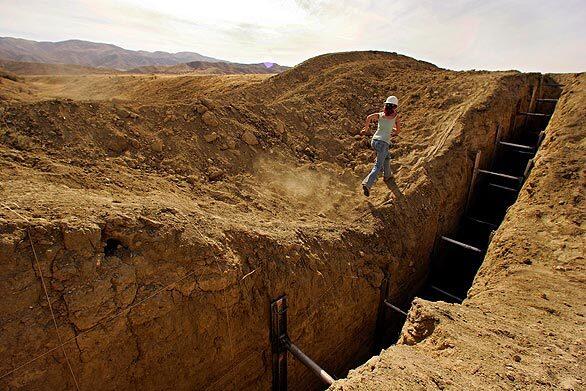
Arizona State graduate student Sarah Robinson, a member of the team of geologists studying the San Andreas Fault, runs along a trench at the Bidart Fan site. (Ricardo DeAratanha / Los Angeles Times)
Advertisement
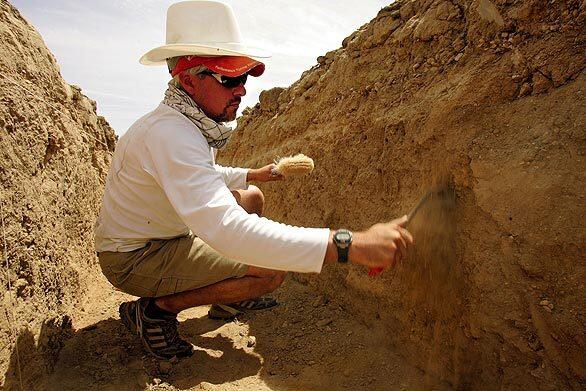
UC Irvine postdoctoral scholar Sinan Akciz scrapes the wall of a trench at Bidart Fan on the Carrizo Plain. He is a among geologists, led by UC Irvine researcher Lisa Grant Ludwig, who are trying to construct a history of earthquakes on the San Andreas Fault. (Ricardo DeAratanha / Los Angeles Times)
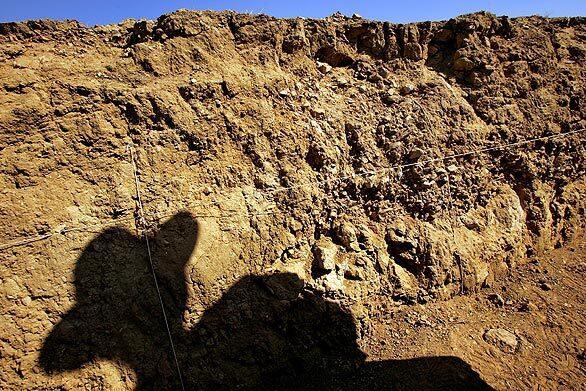
Evidence of the 1857 Ft. Tejon quake is evbident on the side wall of this trench at the Bidart Fan. This area in the Carrizo Plain is one of the easiest places to see movement on the San Andreas Fault. (Ricardo DeAratanha / Los Angeles Times)







